Behind the wheel of Mazda’s wildest rotary-powered race car
Last August, Mazda Motorsports asked me to race its storied 787 race car at the Monterey Motorsport Rolex Reunion. This annual event at WeatherTech Raceway Laguna Seca is part of Monterey Car Week. Those around the California peninsula that week are treated to top-tier concours, auctions, and, of course, vintage race cars competing on track.
The white-and-blue 787 that I drove that weekend competed in the top (GTP) class of the 1990 and 1991 24 Hours of Le Mans. Its sister car was the race winner in 1991, making Mazda the first Japanese auto manufacturer to win the French endurance race. This fire-spitting monster is powered by a 700-horsepower, four-rotor engine that draws attention even when you can’t see it. The unique rotary engine screams through its rev range. YouTube is packed with videos of the shrill howler.
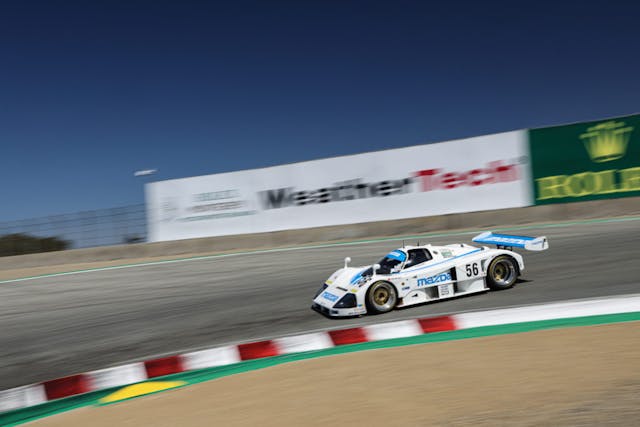
My history with Mazda Motorsports is a long one. In more recent years, I served as a factory driver for the marque, driving for its Rolex GT and IMSA WeatherTech Prototype programs. (A prototype racer, in contrast to a GT-class car, is built from scratch and not based upon any publically available, road-going model in the manufacturer’s portfolio.—Ed.) Obviously, there is a big difference between driving the legendary Mazda 787 and a modern-day prototype, but there are a couple similarities.

For instance, those GTP cars from 30 years ago—the Mazda 787, as well as the Porsche 962, Jaguar XJR, and Toyota Mk III Eagle—made an incredible amount of power. Modern prototypes make less, but their power-to-weight ratio is quite similar to their ’90s brethren thanks to modern, lighter-weight materials.
In both eras of Mazda prototype, you get the same kind of throw-you-back-in-the-seat acceleration. According to the data from the modern dash that was installed in this 787, we almost hit one g of straight-line acceleration while racing at Laguna Seca. (For reference, a stock Tesla Model S can pull about .65g in the same conditions.)
The massive tires on the 787 help to put all that power to the ground. From the back the car looks like it’s riding on giant drag racing tires. Given its age, the braking capability of the 787 is very impressive, too. Modern-day prototypes, however, have even better braking capability, thanks to lightweight carbon-ceramic brakes.
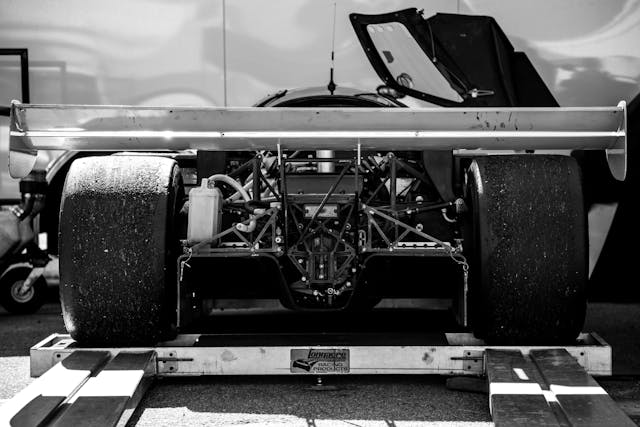
In addition to grip from the tires, the GTP cars produce a lot of aerodynamic grip. The 787’s giant rear wing—which could double as a kitchen table—provides downforce. The channeled design on the underside of the car creates a suction effect against the track. These “ground effects” keep the 787 planted at high speed. Newer prototypes have a smaller surface area for the wing and a less dramatic underside design. Nevertheless, they are quite a bit more efficient in the overall bodywork design, so they actually generate more downforce than a 787.
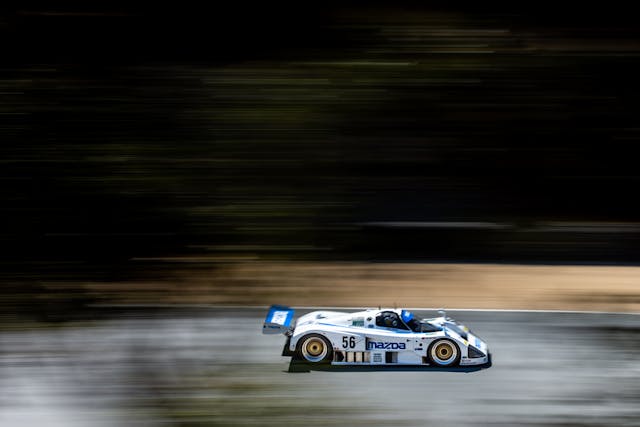
Perhaps one of the biggest differences between the two eras of prototypes is the view from inside the cockpit. A lot has happened in cockpit design over the past three decades. The 787’s interior is filled with dash switches and a very simple, traditional steering wheel. In today’s prototypes, everything is digital, and all the functionality is controlled through toggle buttons predominately located on the steering wheel, which resembles more of a yoke than a wheel. The digital setup doesn’t look more complex than the 787’s, but the control capabilities and adjustments are far more complex.
Another significant difference between a GTP and a modern prototype is the H-pattern gearbox. The box requires heel-toe downshifting as well as clutching on every upshift. In today’s cars, we use paddles that shift in milliseconds and don’t use a clutch at all.

Driving the 787 made me appreciate how important footwork and precise shifting were in these older cars. You had to get everything just right on the upshifts and the downshifts. I had to make sure my heel-toe skills were still sharp. Downshifting a 700-horsepower prototype is a very different experience than downshifting in a modern car.
As special as it was to careen the 787 down the corkscrew and flash across the front stretch, driving it is like driving any other car on track. You must make sure your footwork and steering inputs are smooth, and you have to get your eyes through the corner far in advance. Regardless of prototype generation, all of the basic principles still apply, and it’s incredibly rewarding when you get it all right.
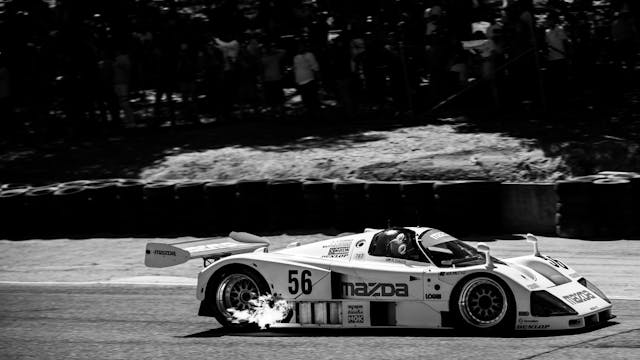
Check out the Hagerty Media homepage so you don’t miss a single story, or better yet, bookmark it.
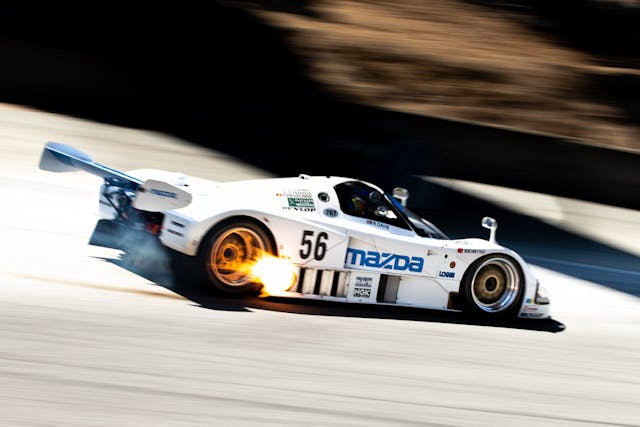

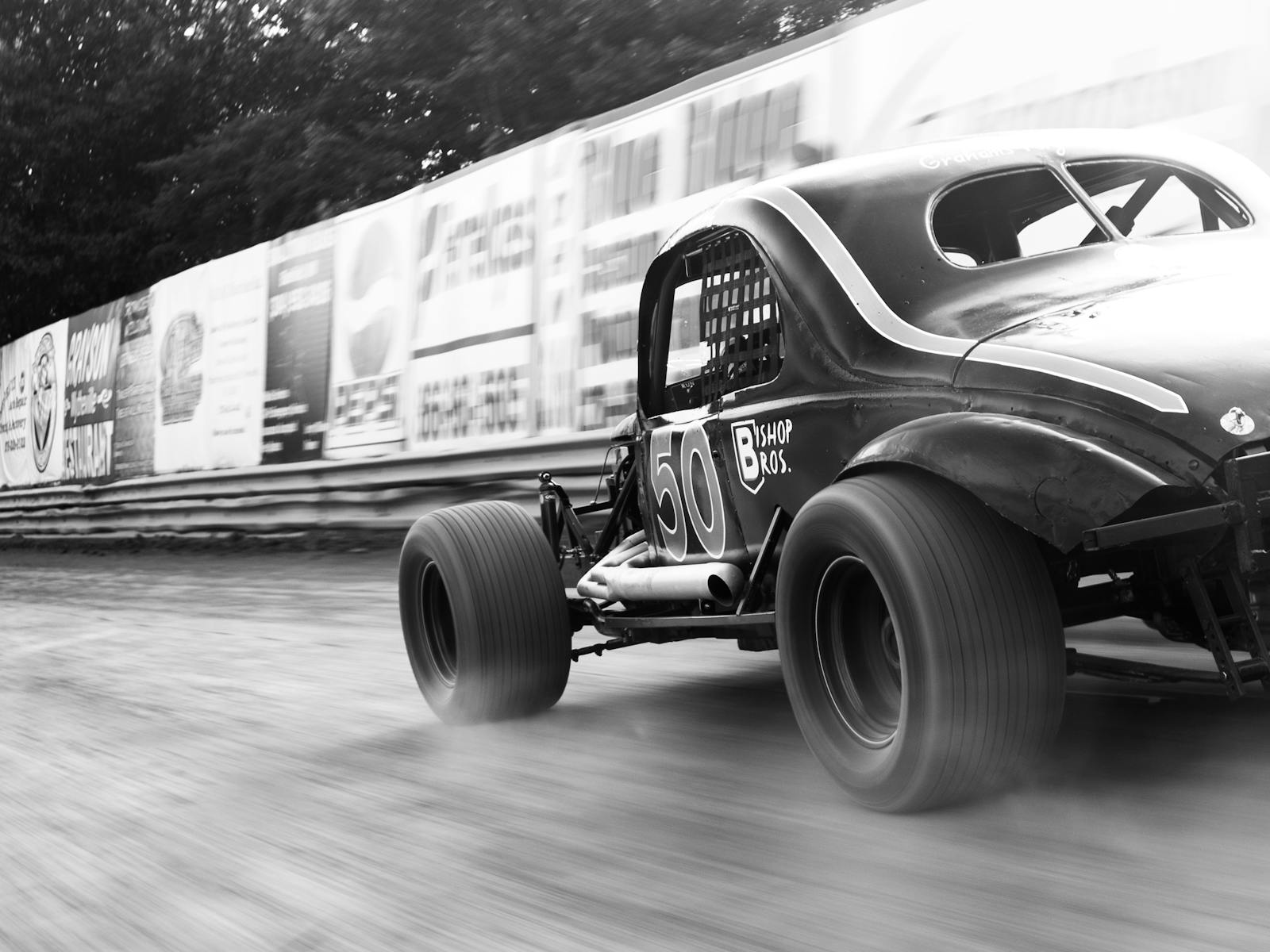
Great article, Tom, bet that car was a blast to drive!
Great article Tom. It makes me wonder about the skills required to drive today’s race cars vs “yesterday’s” race cars…and how many young drivers of today would perhaps struggle in this car more than you. ?? You have the shifting/heel toe/etc skills that maybe are not as common today with the young guns as in yesteryear.